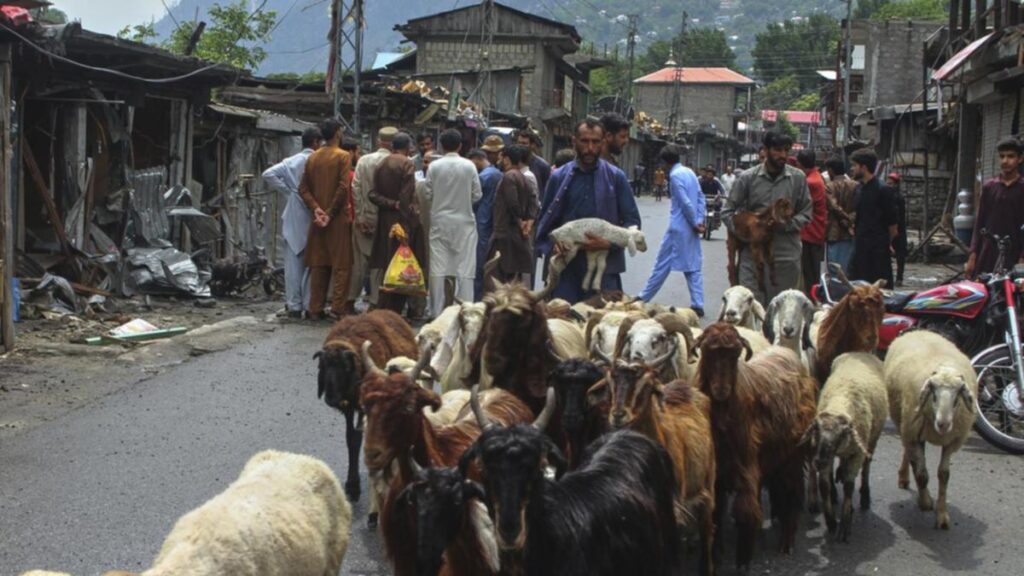Joy about an India-Pakistan ceasefire has been short-lived in Kashmir.
Tens of thousands fled the Indian-controlled part of the disputed region last week amid heavy shelling and drone attacks by Pakistan.
Yet despite a ceasefire announced on Saturday, only a handful of families returned to their homes on Sunday.
“We will go back only after complete calm prevails,” said Basharat Ahmed, who lives in Poonch district.
“It doesn’t take much time for the two countries to start fighting on the border.”
The ceasefire was intended to halt the hostilities between the nuclear-armed neighbours and defuse the worst military confrontation between them for decades.
But just hours later, each side accused the other of violating the deal.
Indian officials said Pakistani shelling since Wednesday had killed at least 23 people and injured scores more.
The shelling also damaged or destroyed hundreds of residential buildings.
A man and his family in Indian-controlled Kashmir had taken shelter in a government-run college in the town of Baramulla.
When they left early on Sunday, soldiers at a checkpoint stopped them, without giving a reason, before they could reach home in the Uri area of Poonch.
“Our joy around the ceasefire just vanished,” said Bashir Ahmed.
He and his family had to return to the shelter at the college.
Indian and Pakistani soldiers each guard their side of the frontier.
There are watch towers every few hundred metres.
Some Indian and Pakistani troops are so close they can wave to one another.
A deadly attack on tourists in Kashmir last month plunged India-Pakistan relations to new lows.
India accused its neighbour of backing the massacre, in which 26 men, mostly Indian Hindus, were killed — a charge Pakistan denies.
Both countries subsequently expelled each other’s diplomats and nationals, and shut borders and airspace.
There were missile strikes, drone attacks, and heavy artillery fire in the days that followed.
On Sunday, India said its missile strikes into Pakistani territory last week killed at least 100 militants, including prominent leaders.
Across the border that divides Kashmir, people feared Indian attacks would flatten their villages.
They began returning after the deal was announced, only to see their houses and businesses wrecked, uninhabitable or unsafe, and their belongings ruined.
People are unsure if the ceasefire will hold and who will help them rebuild their lives.
Abdul Shakoor, from Chinari in Pakistan-controlled Kashmir, ran for his life on Wednesday.
He and his family escaped through fields and walked almost 10 kilometres to take shelter at a relative’s house.
“Many people in other cities who support war don’t realise who suffers the most when conflict breaks out or when two armies exchange fire,” said Shakoor.
“It’s the people living near the border who pay the highest price.”
Although the ceasefire had brought people “immense relief,” he wanted both countries to talk to each other.
“In the end, even after war, it all comes back to dialogue.”
Nestled among the lush green landscape of the Neelum Valley lay dusty mounds of debris and rubble.
The scenic spot a few kilometres from the Line of Control makes it vulnerable when tensions spike or there are cross-border skirmishes.
The valley runs along the Neelum River and, in some places, the border posts of both Pakistan and India are visible.

